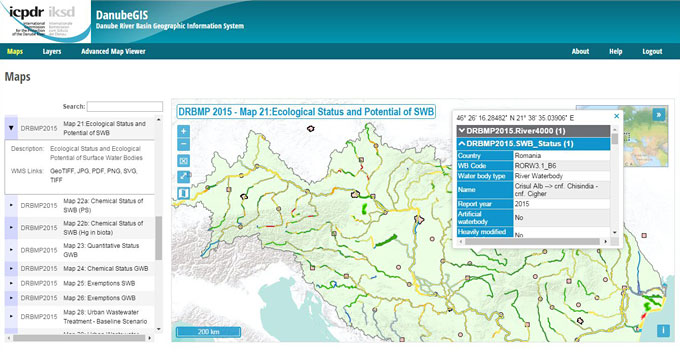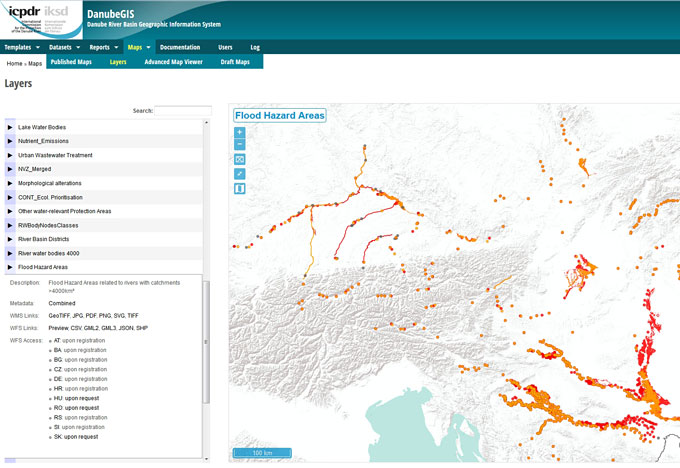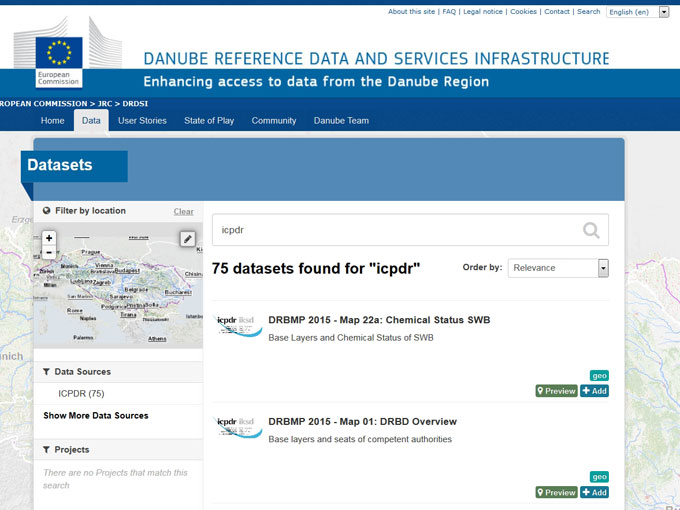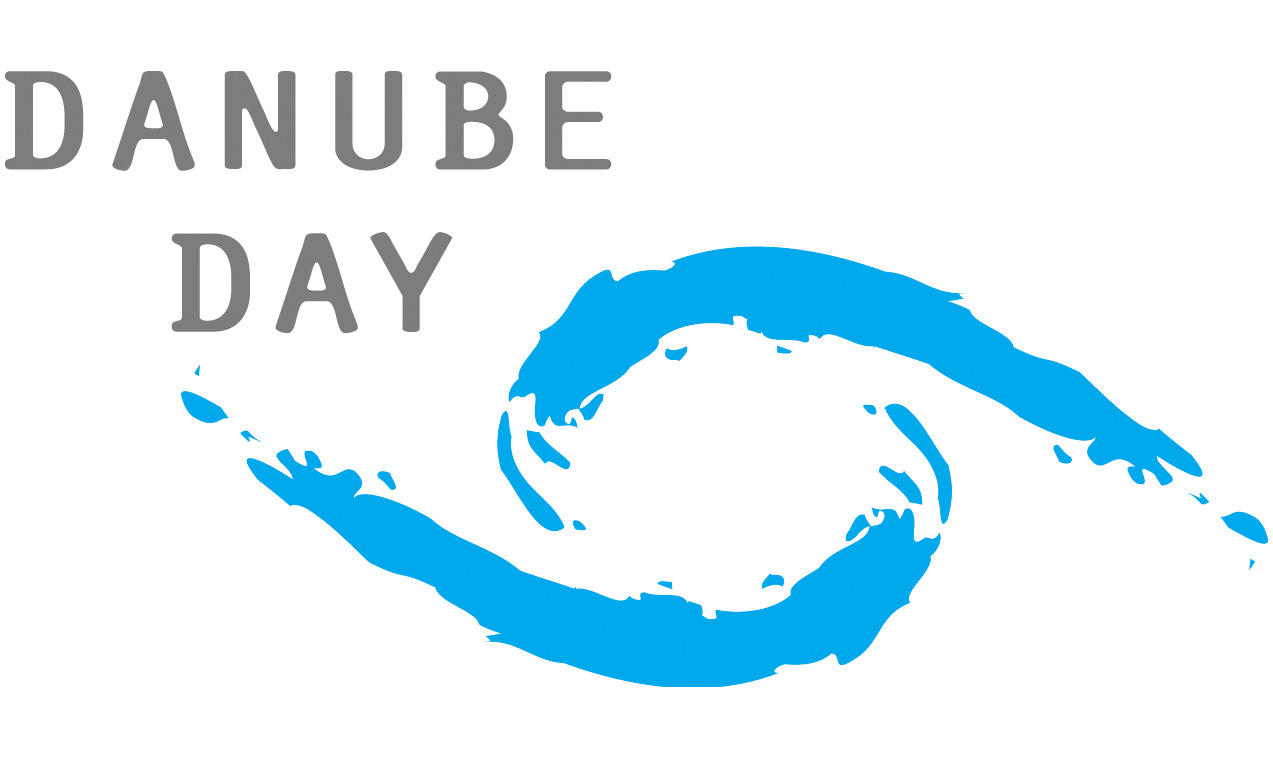Danube Watch 2/2016 - DanubeGIS provides public access to Danube data
DanubeGIS provides public access to Danube data
The DanubeGIS platform supports the ICPDR in its tasks related to spatial data, and it is now open to public users as well – providing access to data and maps for the whole Danube Basin.
The Danube River Basin Geographic Information System – or simply DanubeGIS – is now open for public access. This comprehensive web-based tool has been used by the ICPDR during the last years for data collection, management, and reporting, most notably the recently published Danube River Basin Management Plan Update 2015 and the Danube Flood Risk Management Plan 2015. The maps of these reports and the underlying data are now easily available online.
Development concept, goals and target groups. The DanubeGIS was developed as a tool for ICPDR tasks related to spatial data. A truly in-house product, it was developed by the staff of the ICPDR Secretariat under the guidance of the ICPDR Information Management and GIS Expert Group (IMGIS EG). The geographical area covered by the DanubeGIS is the territory of the Danube River Basin District shared by 19 countries, of which 14 are ICPDR Contracting Parties.
In cooperation with the relevant ICPDR expert groups, the IMGIS EG defined data specifications and templates for all the various topics covered in the system. Where appropriate, it takes into account the relevant EU reporting formats as well as the specific reporting possibilities of non-EU Member States. This approach makes DanubeGIS a tool for integration and storage of the Contracting Parties’ relevant data resources in a harmonised format, and a common basis for data usage in the ICPDR. The national members of the IMGIS EG coordinate data collection in their countries and provide those datasets to the DanubeGIS. In this context, a jointly accepted data policy has been developed.
The DanubeGIS is built to provide a Danube Basin-wide platform to support the ICPDR in its reporting tasks – such as the implementation of the EU Water Framework Directive (WFD) and the EU Floods Directive (FD).
The DanubeGIS content management platform facilitates data collection, quality assurance, analysis, visualisation and mapping. The system architecture is based on open-source software components, which ensures that it remains as flexible as possible to be able to meet the long-term needs of the ICPDR.
“Impressive data and information on the WFD and FD from both EU and non EU Member States have been collected via DanubeGIS," says Dragana Ninkovic of the Jaroslav Cerni Institute and Chair of the IMGIS EG. “Availability of this data online, as well as the corresponding metadata, will provide more opportunities to prepare for the Danube Strategy and other Danube related projects.”
The target groups, which all benefit from the existence of the DanubeGIS platform, are mainly experts working either directly with the ICPDR or in projects related to water management. This includes the 23 observers to the ICPDR, research institutions, universities, other stakeholders and the general public.
“Stakeholder involvement in river basin management and flood risk management planning is stressed as a crucial part of the planning process both in EU WFD and the FD," says Ninkovic. “The more possibilities for data access, the better stakeholders’ understanding of management issues and corresponding measures.”
Data viewing, analysis and access. The important component of the DanubeGIS for public users is the GIS web portal. It enables GIS data viewing and access, showing pre-designed thematic maps as well as individual spatial layers.
In the GIS web map viewer one can select any of more than 40 maps prepared within the DRBM Plan and DFRM Plan, zoom into them and find out about the detailed data of each feature on the map by simply clicking on it (Fig. 1).

In the GIS web map viewer one can select any of the over 40 maps prepared within the DRBM Plan and DFRM Plan, zoom into them and find out about the detailed data of each feature on the map by simply clicking on it. (Fig. 1)
Each map can also be exported as a georeferenced image file or accessed directly as a Web Map Service (WMS) – this allows GIS experts to use the map in any software supporting these standard services.
Users who are interested in more in-depth work with the available data can sign-up for a user account to reveal more expert system features. An advanced web map viewer allows those users to compose maps by combining any individual layers. In addition to WMS, the Web Feature Service (WFS) allows download of the datasets in various formats, including Geography Markup Language (GML – an open interchange format for geographic data) and shape files (Fig. 2).

In addition to Web Map Service, the Web Feature Service allows download of the datasets in various formats, including Geography Markup Language (GML – an open interchange format for geographic data) and shape files. (Fig. 2)
DanubeGIS linking to other geo-information systems. The advanced viewer also enables users to import the geographic data web services from other accessible GIS servers, for example from the Joint Research Centre (JRC) of the European Commission or other relevant data providers.
All maps and layers of the DanubeGIS are equipped with INSPIRE-compliant metadata which is discoverable via the Catalog Services for the Web (Fig. 3-5). This standardised service makes it easy to integrate the ICPDR datasets into other web portals. A first example of such integration is the visibility of DanubeGIS datasets on the portal of the Danube Reference Data Service Infrastructure, which is maintained by the JRC. This portal aims to provide scientific support to the European Union Strategy for the Danube Region in close cooperation with key scientific partners of the Danube Region.

(Fig. 3, Fig. 4)

The INSPIRE-compliant metadata of the DanubeGIS maps and layers make it easy to integrate ICPDR datasets into other web portals, such as the portal of the Danube Reference Data Service Infrastructure, maintained by the Joint Research Centre (JRC), which provides scientific support to the EU Strategy for the Danube Region. (Fig. 5)
The DanubeGIS doesn’t aim to provide the whole range and full detail of all of the datasets that may be available on related systems nationally, as it only covers rivers with a catchment size larger than 4000 km. On the other hand, its unique quality is that it provides combined datasets for the whole Danube Basin, that are relevant for the full range of tasks of the ICPDR such as industrial and urban pollution sources, waste water treatment, continuity interruptions for fish migration, hydrological alterations, and the status assessment of water bodies.
DanubeGIS is online. The DanubeGIS is now open for public access. Go to https://www.danubegis.org and view the maps of the Danube River Basin Management Plan and the Danube Flood Risk Management Plan 2015 in a new and interactive way.







